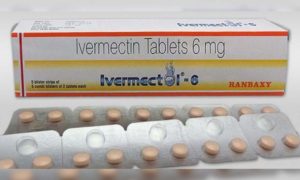It’s True, Less Than 1% of Vaccine Adverse Effects Are Reported

Vaccine safety has been a topic of concern for decades since the US government initiated its unprecedented medical double standard, relieving vaccine manufacturers of liability for injury caused by vaccines in the 1986. The government created the Vaccine Adverse Event Reporting System (VAERS) in 1990 by the CDC and FDA as a means to collect and analyze adverse effects that are associated with vaccines. But that system has received criticism from all sides for being unreliable and inadequate.
In order to address the weaknesses in the system, the Department of Health and Human Services (HHS) gave Harvard Medical School a $1 million dollar grant to track VAERS reporting at Harvard Pilgrim Healthcare for 3 years and to create an automated reporting system which would revolutionize the VAERS reporting system- transforming it from “passive” to “active.” After the pilot, the report was published showing that the group had succeeded.
Evidently, they succeeded too well.
The report showed that vaccine injury reports through VAERS were less than 1 percent of the actual number. According to the CDC, only about 30,000 adverse events are reported for the entire US annually through VAERS. In three years, the Harvard study showed about 35,570 adverse events in the small population of 376,452 in Massachusetts. This amounted to an adverse event every 38.46 vaccinations (or 2.6 percent of vaccinations).
This was clearly alarming and would have rocked the entire industry if given the light of day. Vaccine adverse events are supposed to be rare; they shouldn’t occur in over 2 percent of shots. So, the CDC buried the study and cut ties with the researchers.
The report states: “Unfortunately, there was never an opportunity to perform system performance assessments because the necessary CDC contacts were no longer available and the CDC consultants responsible for receiving data were no longer responsive to our multiple requests to proceed with testing and evaluation.”
On the flip side, there is legitimacy to the claim that not all vaccine adverse events are causal. In fact, one study showed that only 3 percent of VAERS-reported injuries are definitely caused by vaccines. Twenty-two percent were classified as probably cause, and another 22 percent were classified as possible. This small study showed that 53 percent of reports had nothing to do with the vaccine. The 47 percent that did aligns with the roughly 48 percent paid out in vaccine court.
However, even the updated Harvard system only recorded adverse events for 30 days following vaccination. This still excludes all the potential long-term neurological damage done by vaccines over time, such as the very real possibility of vaccine-induced developmental delays and neurological conditions such as autism spectrum disorder.



